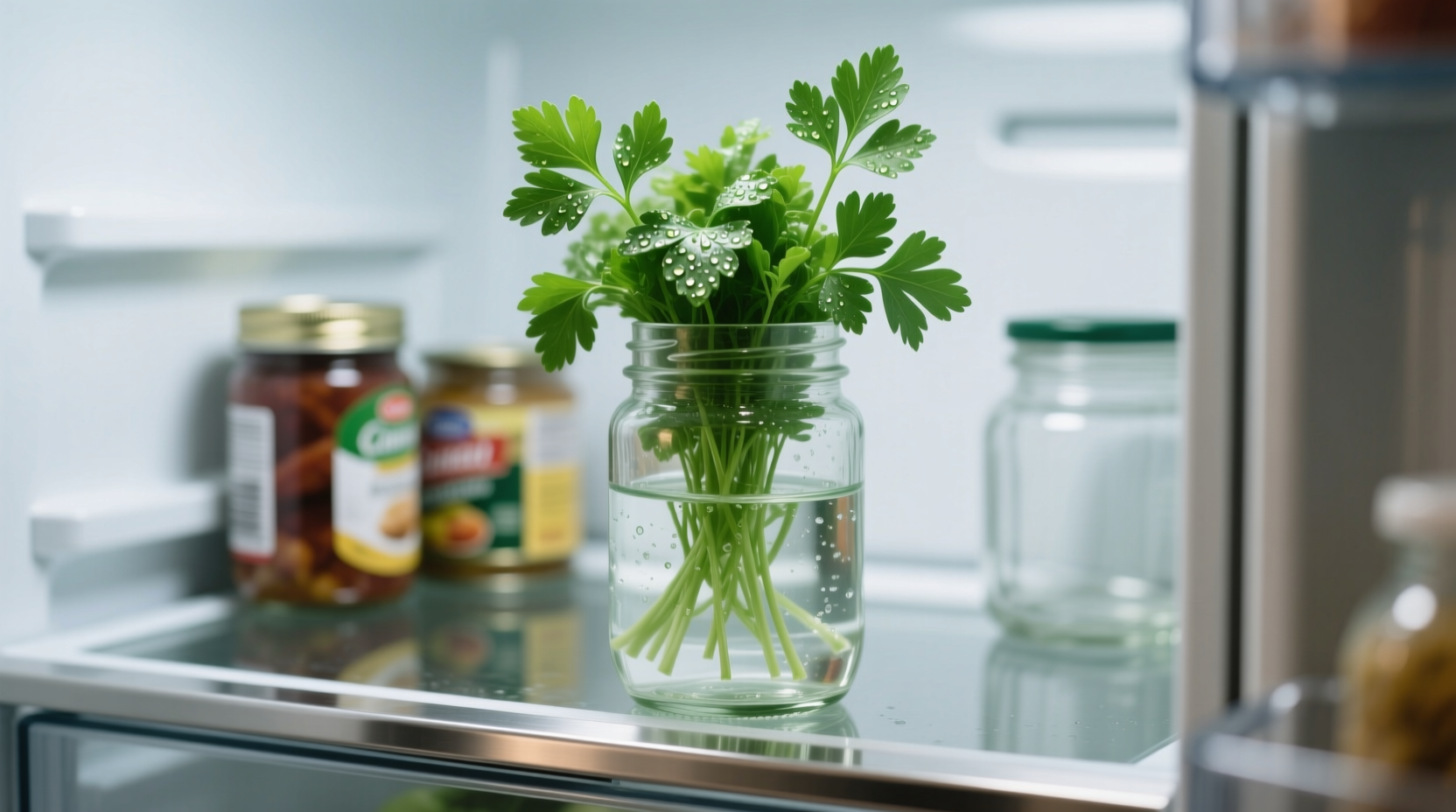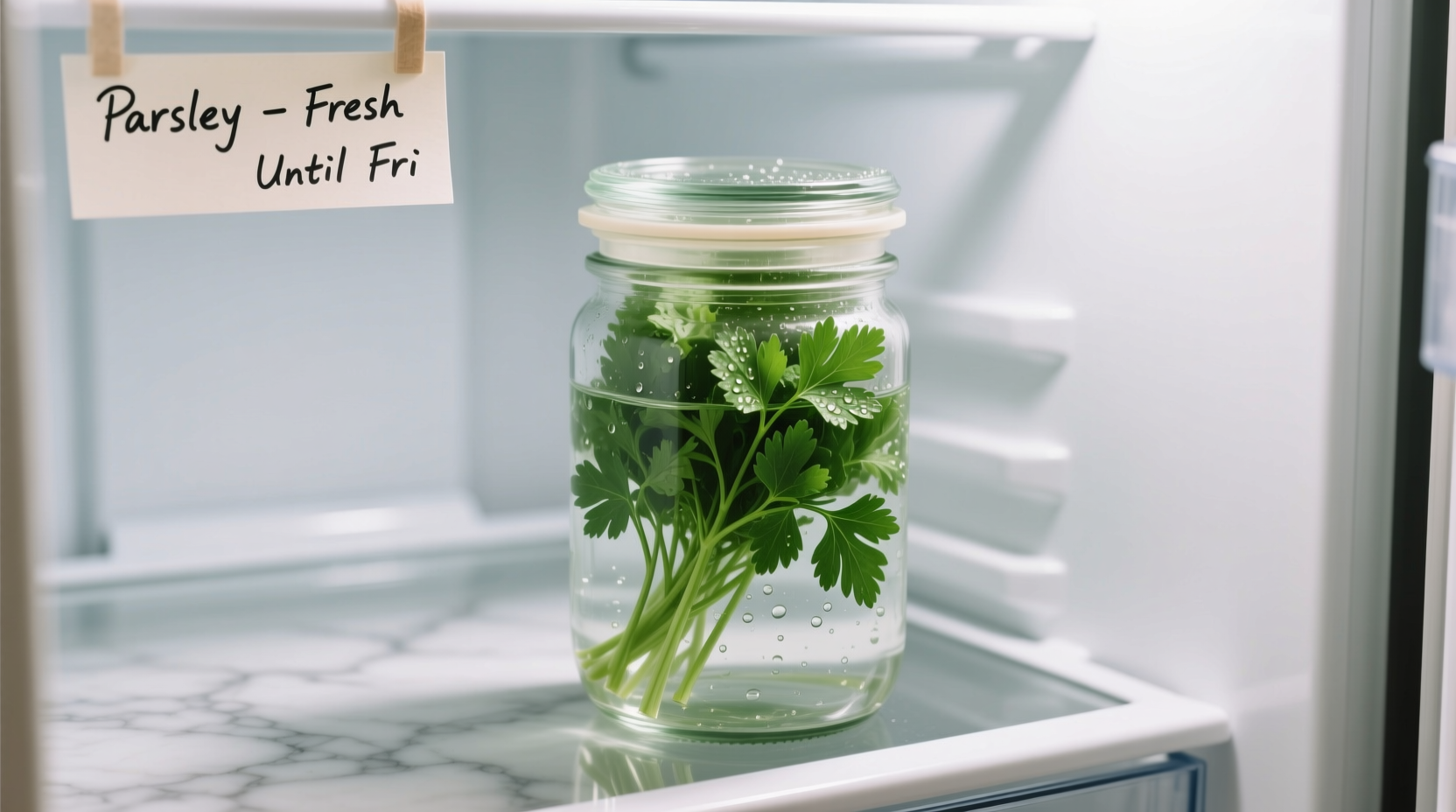Store fresh parsley in the fridge by trimming the stems, placing it upright in a glass with 1-2 inches of water, covering loosely with a plastic bag, and changing the water every 2-3 days. This method keeps parsley crisp and flavorful for 1-2 weeks.
Nothing ruins a fresh dish faster than wilted, slimy parsley. If you've ever tossed out a bunch of herbs just days after buying them, you're not alone. Proper storage can double or triple your parsley's shelf life, saving you money and reducing food waste. As a culinary professional who's worked with fresh herbs daily for over 15 years, I've tested every storage method—and the water technique consistently delivers the crispest, longest-lasting results.
Why Proper Parsley Storage Matters
According to USDA food safety guidelines, fresh herbs like parsley are highly perishable and require specific storage conditions to maintain quality. Improper storage leads to rapid moisture loss, wilting, and microbial growth. The average American household wastes over $1,500 annually on spoiled food—including fresh herbs that could have been preserved with proper techniques.
The Water Method: Step-by-Step Guide
This professional technique mimics how herbs grow, keeping them hydrated while preventing excess moisture that causes spoilage.
- Trim the stems (1/2 inch) with sharp scissors to create fresh cut ends
- Place upright in a glass or jar with 1-2 inches of cool water
- Cover loosely with a plastic produce bag (secure with a rubber band)
- Store in the main compartment of your refrigerator (not the door)
- Change water every 2-3 days to prevent bacterial growth

Storage Method Comparison
| Storage Method | Shelf Life | Quality After 7 Days | Best For |
|---|---|---|---|
| Water method (recommended) | 10-14 days | Crisp, vibrant green | Most home kitchens |
| Damp paper towel + container | 7-10 days | Slightly limp | When fridge space is limited |
| Original store packaging | 3-5 days | Wilted, yellowing | Immediate use only |
| Sealed plastic bag (no moisture) | 4-6 days | Dry, brittle | Short-term storage |
When to Use Alternative Methods
While the water method works best for most situations, these alternatives have specific applications:
- Damp paper towel method: Ideal when refrigerator space is limited. Wrap parsley in a slightly damp paper towel, place in a partially open container, and check moisture levels daily.
- Herb keeper containers: Specialized containers with built-in water reservoirs can extend freshness but require proper maintenance to prevent mold.
- Freezing for long-term storage: For extended preservation beyond two weeks, chop parsley, mix with olive oil, and freeze in ice cube trays.
Reviving Wilted Parsley
Don't toss parsley that's starting to wilt! Submerge the entire bunch in ice water for 15-20 minutes. The cold water rehydrates the cells, restoring crispness. This technique works best when combined with the water storage method afterward.
Common Storage Mistakes to Avoid
Even with the right method, these errors can shorten your parsley's lifespan:
- Storing near ethylene-producing fruits like apples or bananas accelerates spoilage
- Using warm water in the storage container promotes bacterial growth
- Sealing in airtight containers without moisture control creates condensation that causes rot
- Placing in the refrigerator door where temperature fluctuates with each opening
How Long Should Parsley Last?
With proper storage, expect these shelf life durations:
- Farmers' market parsley: 10-14 days (often fresher than store-bought)
- Supermarket bunches: 7-10 days (may have been harvested earlier)
- Pre-cut parsley: 4-6 days (more surface area accelerates spoilage)
Discard parsley showing significant yellowing, black spots, or slimy texture—these indicate microbial growth that can't be reversed.
Seasonal Storage Considerations
Parsley harvested in cooler months typically stores longer than summer-picked varieties due to thicker cell walls. During peak summer heat, check water levels daily and consider storing parsley in the crisper drawer's high-humidity setting for optimal results.











 浙公网安备
33010002000092号
浙公网安备
33010002000092号 浙B2-20120091-4
浙B2-20120091-4